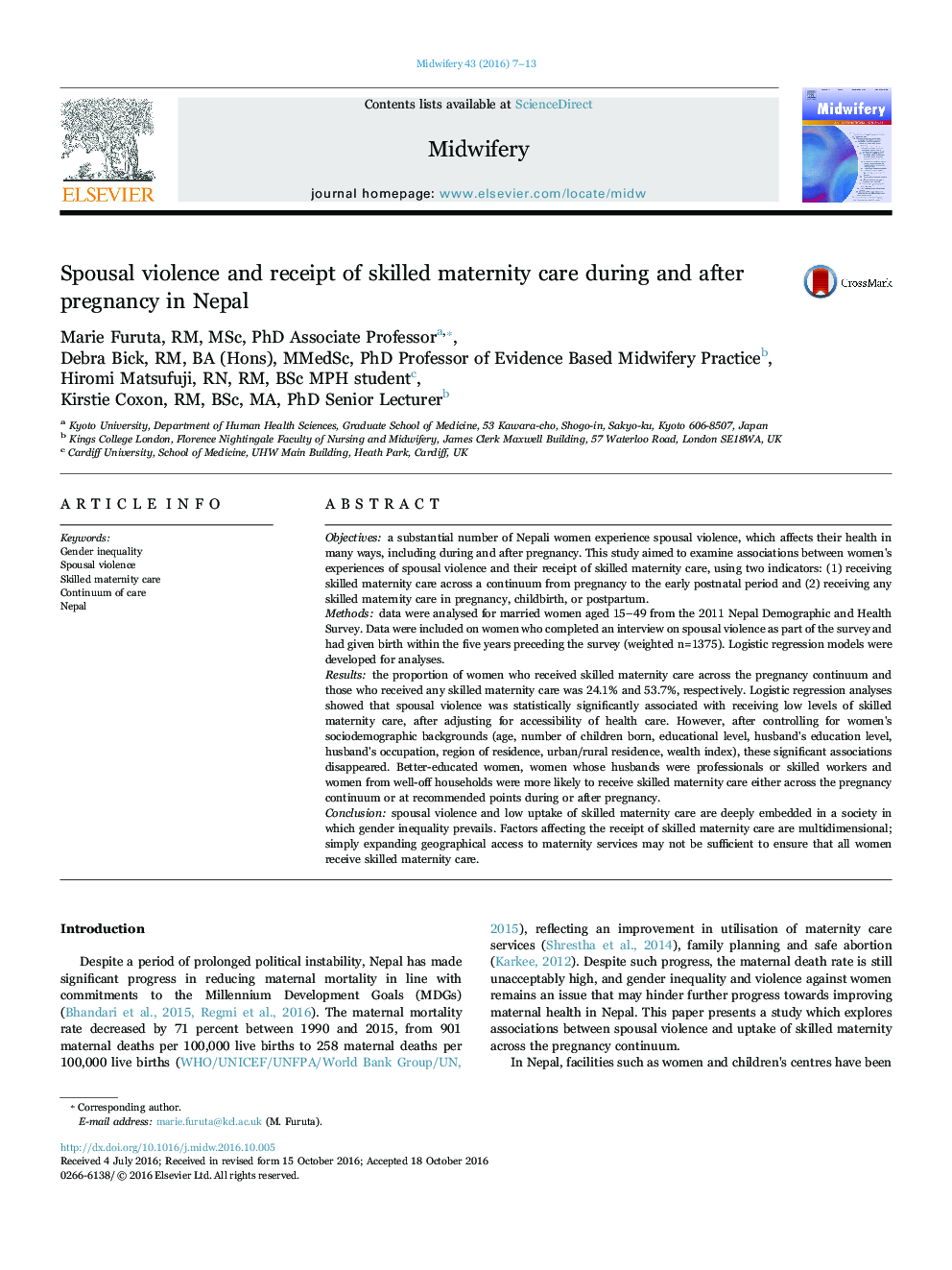| کد مقاله | کد نشریه | سال انتشار | مقاله انگلیسی | نسخه تمام متن |
|---|---|---|---|---|
| 5122267 | 1487141 | 2016 | 7 صفحه PDF | دانلود رایگان |
- Around a third of women in a Nepalese national survey experienced spousal violence.
- Spousal violence was associated with not receiving skilled maternity care.
- These associations disappeared after controlling for sociodemographic characteristics.
- The relationship between skilled maternity care and social context was complex.
Objectivesa substantial number of Nepali women experience spousal violence, which affects their health in many ways, including during and after pregnancy. This study aimed to examine associations between women's experiences of spousal violence and their receipt of skilled maternity care, using two indicators: (1) receiving skilled maternity care across a continuum from pregnancy to the early postnatal period and (2) receiving any skilled maternity care in pregnancy, childbirth, or postpartum.Methodsdata were analysed for married women aged 15-49 from the 2011 Nepal Demographic and Health Survey. Data were included on women who completed an interview on spousal violence as part of the survey and had given birth within the five years preceding the survey (weighted n=1375). Logistic regression models were developed for analyses.Resultsthe proportion of women who received skilled maternity care across the pregnancy continuum and those who received any skilled maternity care was 24.1% and 53.7%, respectively. Logistic regression analyses showed that spousal violence was statistically significantly associated with receiving low levels of skilled maternity care, after adjusting for accessibility of health care. However, after controlling for women's sociodemographic backgrounds (age, number of children born, educational level, husband's education level, husband's occupation, region of residence, urban/rural residence, wealth index), these significant associations disappeared. Better-educated women, women whose husbands were professionals or skilled workers and women from well-off households were more likely to receive skilled maternity care either across the pregnancy continuum or at recommended points during or after pregnancy.Conclusionspousal violence and low uptake of skilled maternity care are deeply embedded in a society in which gender inequality prevails. Factors affecting the receipt of skilled maternity care are multidimensional; simply expanding geographical access to maternity services may not be sufficient to ensure that all women receive skilled maternity care.
Journal: Midwifery - Volume 43, December 2016, Pages 7-13
